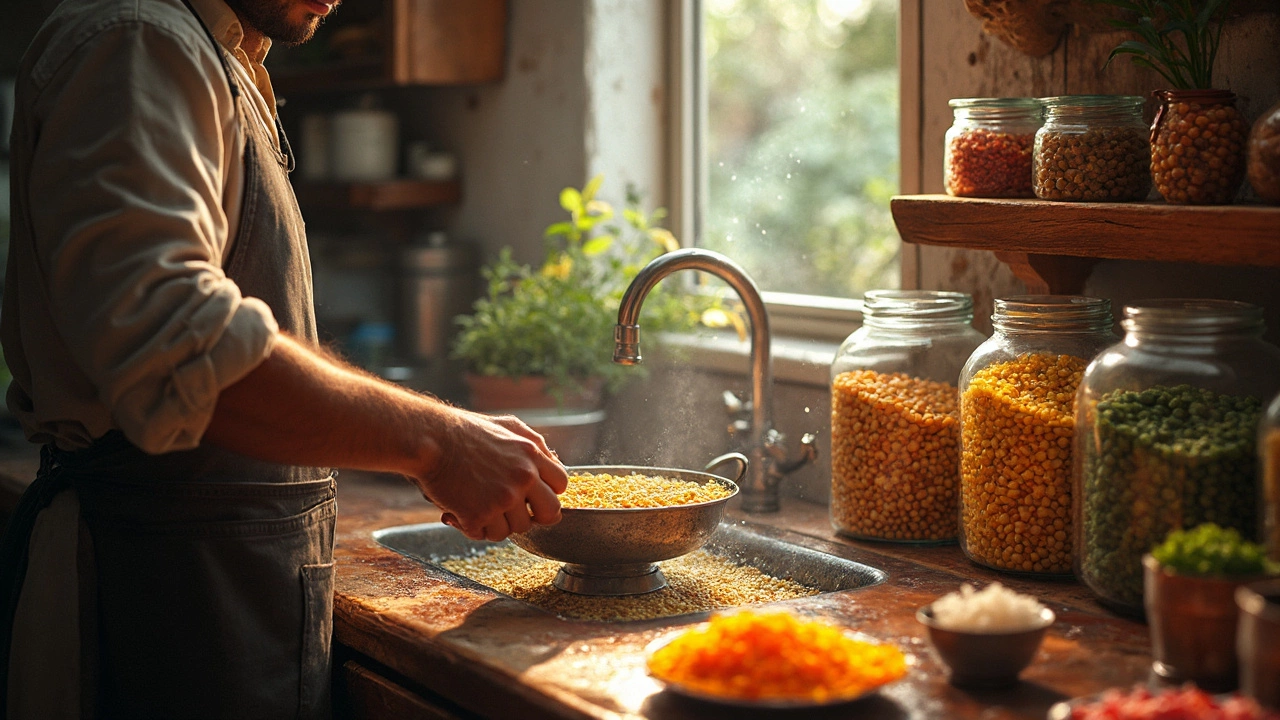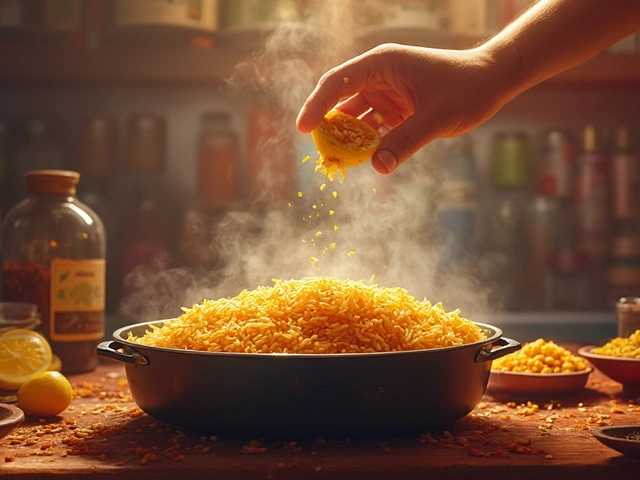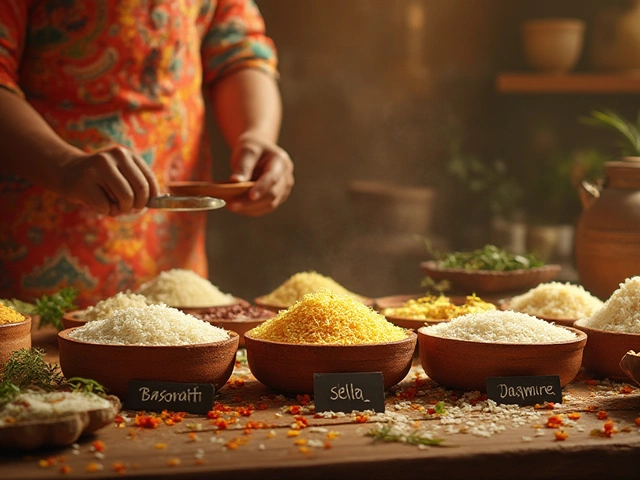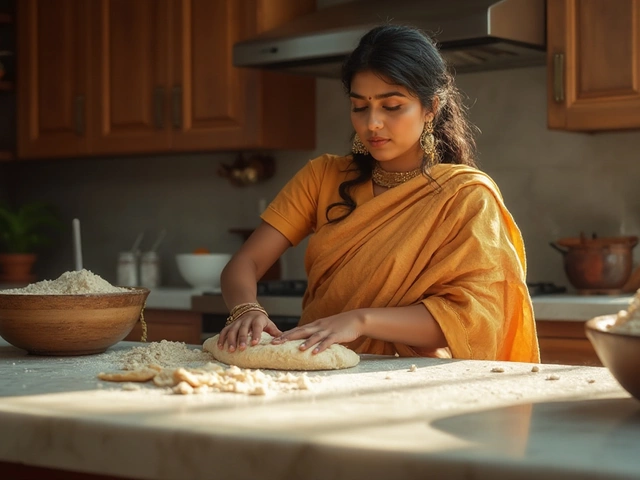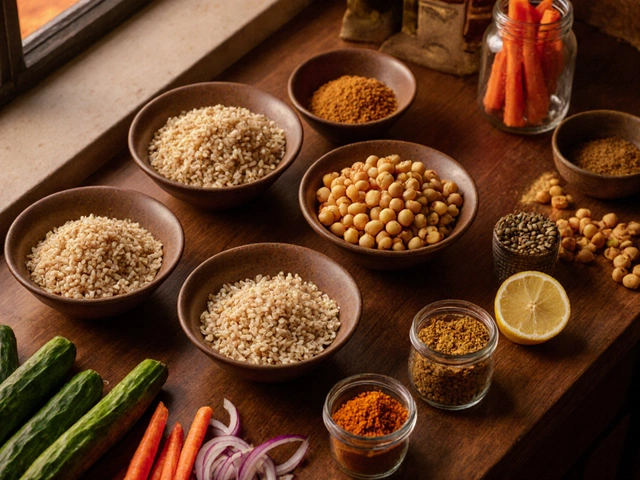Ever stood in your kitchen with lentils in hand, wondering if you should really bother washing them before cooking? If you're like most of us, you're looking for the quickest route to a comforting bowl of dal without skimping on flavor or quality. The debate over whether dal needs to be washed is a hot topic among home cooks, and it turns out there's more to it than just cleanliness.
Washing dal isn't just about getting rid of dirt or any unwanted particles. Nope, there's a whole science to it. Give them a rinse, and you'll notice a lot of cloudy, starchy water heading down the drain. That's because lentils naturally come coated with dust and sometimes even pesticides. By rinsing them, you're also saying goodbye to those earthy flavors that might not sit well with every dish.
There are traditional reasons, too. Across different regions, cooks have sworn by rinsing their lentils to achieve different textures and tastes in their recipes, making the washing step more than just caution—it's culinary wisdom passed down through the generations. Want your dal a bit more creamy or less sticky? Washing could be your secret weapon.
- Why Washing Dal Matters
- The Science Behind the Rinse
- Regional Variations in Dal Preparation
- How to Properly Rinse Dal
- Tips for Improving Your Dal Dishes
Why Washing Dal Matters
Washing dal before cooking can make a big difference in your dish's final outcome. You might be thinking, isn’t it just lentils? But here's the scoop: those little powerhouses often carry surface dust and natural starch, which can affect not just cleanliness but also taste and texture.
Let's talk about dal cooking. If you've ever skipped the rinse and ended up with sticky, mushy lentils, you're not alone. When you give them a good rinse, you're washing away excess starch, which helps the dal cook up more evenly. This simple step can stop your dish from turning into an unintended porridge unless that's your goal.
Besides, there may be traces of chemicals, pesticides, or preservatives on uncooked dal from storage or processing. A quick rinse can wash away these unwanted extras, offering a purer taste and safer consumption. It's a bit like washing your veggies—only without the scrubbing.
| Item | Reason to Wash |
|---|---|
| Lentils | Remove starch and impurities |
| Chickpeas | Better texture and taste |
Globally, people approach cooking lentils differently. But one thing many cooks agree on is that a simple rinse can enhance flavor. It might just become your favorite step once you notice how that satisfying swirl of water turns clean as lens snap to life before cooking.
The Science Behind the Rinse
So, you've wondered why even mess around with the idea of washing dal? There's a lot going on behind that kitchen counter that has to do with more than just neutralizing dirt. When you rinse your dal, you're breaking down surface starches. This reduces potential stickiness that could turn your dish into a gloopy mess. A little rinse goes a long way to consistently delicious results.
Starches are notorious for clinging onto legumes like lentils, causing that kind of cloudy water you see swirling down the drain. This not only changes the consistency of your dish but can also affect the flavor profile. Did you ever end up with dal that tastes pasty? Skipping the rinse might just be the culprit.
Interestingly, rinsing your lentils also helps flush out any residual chemicals or pesticides. While most packaged lentils are safe, giving them a rinse acts like a kitchen insurance policy against those unexpected flavors and health concerns.
Speaking of health, residues from chemicals can be a hidden hitch. Why let anything take away from the nutritious value of your lentils when a simple rinse can do the trick? It's about maximizing the taste while boosting health aspects, a win-win strategy every home cook can get behind.
So, the next time you’re ready to whip up some delicious dal, keep this in mind: washing not only elevates your dish but also preserves the taste and benefits of this essential ingredient.
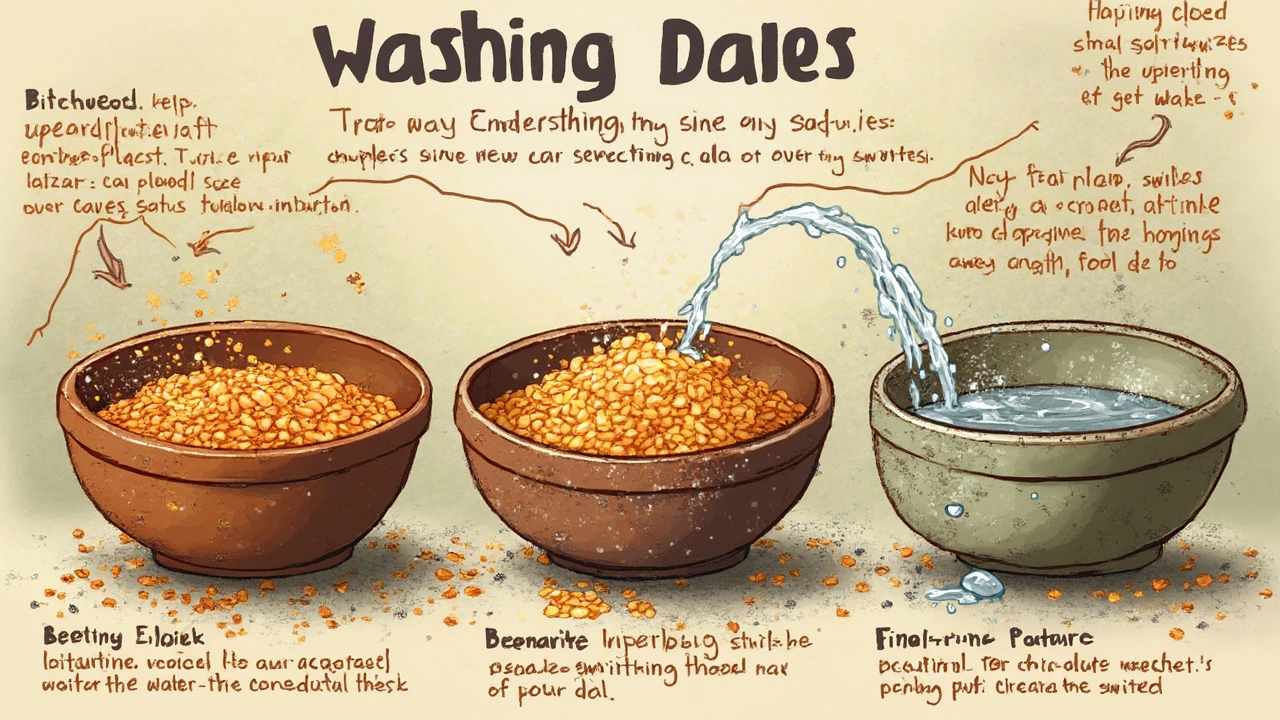
Regional Variations in Dal Preparation
If you've ever traveled across India, you've probably noticed that dal isn't made the same way everywhere. Each region has its unique twist, and it's all part of the charm. But did you know these differences often start with how the dal is handled even before it hits the pot?
In Northern India, where you'll find thick and rich dals, cooks typically wash and soak the lentils for hours. This extra soaking time isn't just about softening the lentils; it helps create that creamy texture that makes dishes like Dal Makhani so comforting. Want a dal that's thick and hearty? Taking a leaf out of the north's cookbook might be your ticket.
Zoom down south, and you'll find a whole different game. While northern regions often focus on richer gravies, southern recipes like Sambar or Rasam might feature a lighter texture. Rinsing is usually brief, just enough to clean without over-soaking. This helps the lentils quickly break down, keeping the dishes soupy and perfect for hot climates.
The Bengali way, found in the eastern parts, often gives the lentils a toasty aroma by dry-roasting them before cooking. Here, rinsing can vary, but what's constant is the addition of spices right after the wash, infusing flavors even before the boil begins. Taking the extra step of roasting post-rinse brings out oils in the spices and amps up the flavor.
Even in the west, where dishes might feature a lighter consistency, rinsing isn't skipped. Here, however, the approach often plays around with various pulses and beans, requiring different rinsing techniques according to size and density. Mixing and matching pulses after a thorough rinse can result in some fascinating textures.
Each region's method adapts to its climate, available ingredients, and cultural preferences. Trying out these regional techniques can add a new layer of variety to your dal cooking adventures.
How to Properly Rinse Dal
Getting your dal just right starts with a solid rinse. Think of it as the first step to deliciousness. Now, don't just give it a quick splash under the tap and call it a day. Here's the best way to ensure those little lentils are ready to shine in your dish.
First things first, pour the dal into a roomy bowl or a deep sieve. You'll want enough space so you can really swish them around without risking a spill.
Next up, let's get to rinsing:
- Run cold water over the dal, angling the sieve or tilting the bowl a bit to let all that water flow through it nicely.
- Using your hand, give the lentils a gentle rub. This helps dislodge any dust or residue stuck on them. You'll probably notice the water gets murky—that's your cue to keep rinsing.
- Drain the water completely and repeat the process. Do this at least 2 to 3 times, until the water runs clear. Clear water means your lentils are good to go!
If you’re the type who loves visuals, here's a quick look at how many rinses it'll take depending on the type of dal:
| Type of Dal | Expected Rinses |
|---|---|
| Red Lentils | 2-3 Rinses |
| Split Bengal Gram | 3-4 Rinses |
| Pigeon Peas | 3 Rinses |
For bonus points in the flavor game, soak the dal for about 15-20 minutes after rinsing. Soaking can lead to faster cooking and softer texture. Just remember to discard the soaking water!
This method isn't just a ho-hum kitchen task. It's like giving your dal a spa treatment before they go on to do their thing in your meals. So take a little rinse break, and you'll thank yourself later when your dal is the star of your dish.
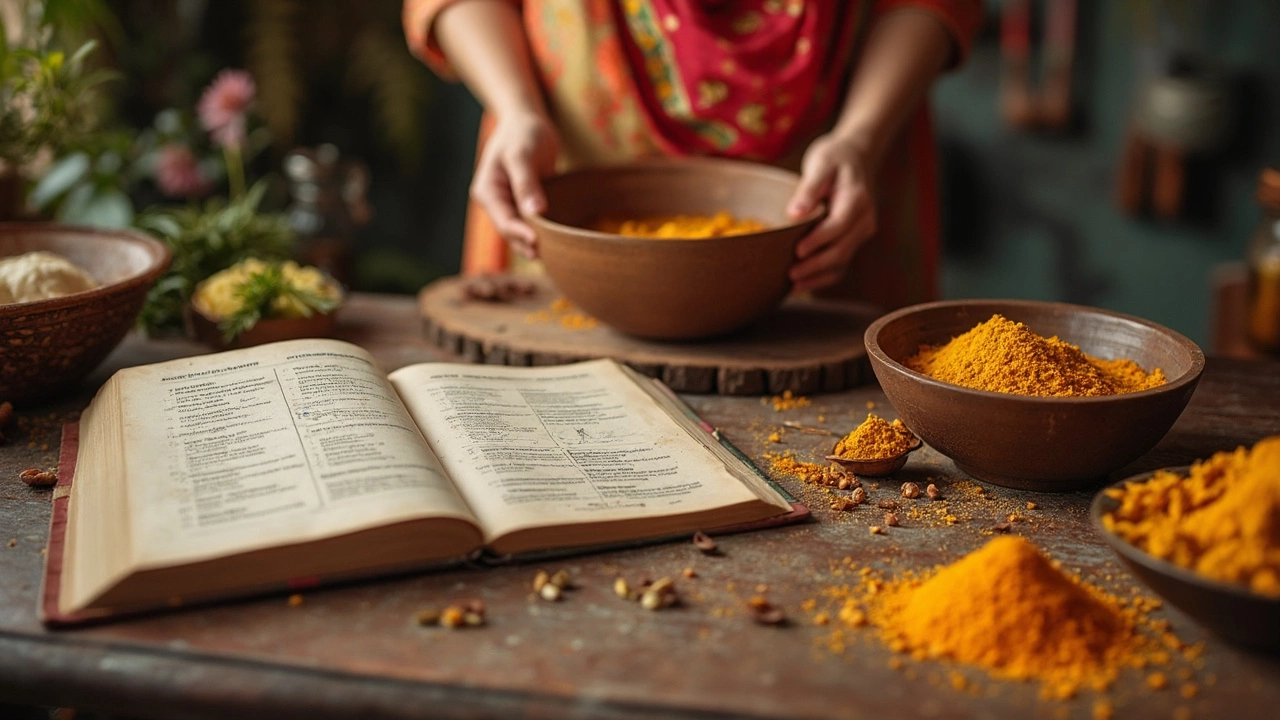
Tips for Improving Your Dal Dishes
Making a great dal isn’t just about having the perfect recipe. It’s about those small tweaks and secrets that can take your dish from just okay to amazing. So if you're ready to up your dal cooking game, here are some tips that can work like magic in your kitchen.
First things first, always wash dal thoroughly. Not only does it remove dirt and impurities, but it also helps to soften the lentils. This simple act can drastically change the texture of your dal, making it smoother and creamier.
Another pro tip? Get the spices right. Typically, a tadka or tempering of spices brings out the best in a dal dish. Heat some ghee or oil, and toss in mustard seeds, cumin, and a pinch of asafoetida. It gives your dal an aroma that'll make everyone come running to the kitchen.
Don’t forget about the consistency. Whether you like it thin or thick, getting it just right is crucial. Add less water for a thicker dal or more if you prefer a soup-like consistency. Remember, the type of lentils affects water absorption, so experiment a little until you find your perfect balance.
And if you really want to amaze your taste buds, try adding a squeeze of lemon juice or a small dollop of yogurt right before serving. These little extras can enhance the flavor significantly, giving a refreshing twist to the palate.
- Start with fresh ingredients – always choose high-quality lentils for better taste.
- Sauté onions, ginger, and garlic till golden brown for a deeper flavor.
- Use a pressure cooker to save time and intensify flavors.
- Add tomatoes and turmeric for that vibrant color and earthy taste.
- For variety, add vegetables like spinach or bottle gourd for extra nutrition.
By paying attention to these small but impactful tips, you can transform a simple dal recipe into a memorable meal. It’s all about experimenting and not being afraid to mix things up a bit!
- Poplular Tags
- dal cooking
- wash dal
- dal preparation
- lentils





